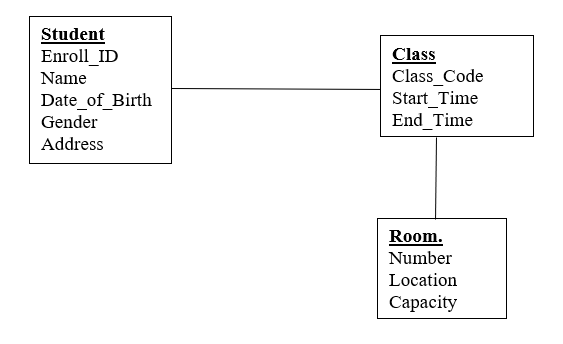In an environment where a very large volume of information is treated, it is necessary to define a way in which the information is structured and well defined, capable of determine (explicitly or implicitly) the flow of information and its relationships.

As we can see in the picture above, the information is organized by “Entities”, which holds the information related to its type. For Example: Student_ID is an info exclusive for Student, Capacity is a info exclusive for Room. Altough the information is separated in Entities, these same Entities are linked to each other. These links are called relationship.
Models, as the one above, exist to represent the information and it´s relationships. For example, Looking from the Room´s perspective, we know how many students have classes there, or, from the student´s perspective, we know which class he belongs to and even where is located the room in which he attends to classes.
It is very important to identify the way relationships occur. An entity may relate directly to several other entities, or with only one entity, and in very rare cases it may not relate to any other entity.
They are identified by their type:
Relationship 1 to 1

The above relationship represents the case of a user who has the login information (username and password). Note that one Person can have only one username and Password, and at the same way, one Login can belong exclusively to one person.
Relationship 1 to N

The above relationship represents the case of a class that contains many students.
Relationship N to N

In the relationship above, we have the case of the teacher who teaches many students and the students who have classes from many teachers. This type of relationship gives origin to a new entity, which will mix information from both entities.

For conclusion of this first part, we can say that when you organize your data, you are more able to understand your data and with that optimize your processes, minimize losses, increase profits and even predict some future events.
When you are working with a non-organized source of information, the first step is to identify the Entities, the info related to each entity and its relationships. Currently there are some concepts about non-structured data, but that´s not the approach of our study for this moment.
In the next part we will learn how to create Entity Relationship Diagrams.